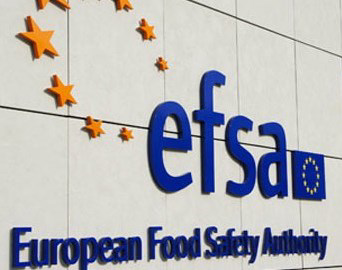Does EFSA’s opinion pave the way for insect protein?

The long awaited EFSA opinion on the safety of using insects in animal feed and food is out. But the scope seems wide. So the question arises: does this opinion really speed up the approval of insect meal for use in livestock feed?
When you look at the main conclusions from the EFSA opinion, it is clear that still some safety issues need to be overcome, and some data gaps need to be overcome before safe use of insects as a food or feed source can be guaranteed. But it is good to keep in mind that this risks assessment from EFSA is not only based on insect protein for livestock feed. Also the use of insects as human food is considered and different types of substrates are looked into. For the use in animal feed, the TSE legislation for example is an important set of rules.

Also read the AllAboutFeed whitepaper on this subject: Why are insects not allowed in animal feed?
Risks for animal feed and human food
When insects are used for human food, the ‘novel foods’ regulation comes into the picture. Tarique Arsiwalla, founder of Protix and spokesperson of the International Platform of Insects for Food and Feed (IPIFF) further addresses this: “It is a good thing that EFSA has published the scientific opinion. The problem, however, is that the scope of the opinion is too wide. It is based on the risks for animal feed and human food. In addition, all insect species are covered and all kinds of substrates are included. We, as insect producers (in the EU), are not looking at substrates that are currently not allowed to use (such as manure), and we simply don’t want to use them. We stick to the approved substrates and EFSA also states in this opinion that “when currently allowed feed materials are used as substrate to feed insects, the possible occurrence of microbiological hazards is expected to be comparable to their occurrence in other non-processed sources of protein of animal origin”.

Also read: Finally: EFSA opinion on insects for feed
IPIFF would like to see a more specifically formulated opinion on the use of insect protein. “Start with narrowing it down to only insect protein, a few mainly used insect species, raise on approved substrates and for use in aquafeed only. The legislation for aquafeed still prohibits the use of insect protein in fish diets, although it takes less effort to change this particular legislation, compared to changing the rules to include insect meal in livestock diets, such as pigs and poultry.”
Quality control is key
EFSA concludes in its report that when EU allowed feed materials are used to feed the insects, the possible occurrence of microbiological hazards are comparable when these feedstuffs are used for the production of other types of animal protein. Franck Ducharne, CEO from Entofood CEO, agrees. “Any feedstuff used in animal feed has to comply with quality standards and biosecurity. Insect protein production is not an exception and must follow the procedures of QC along the production chain to guarantee best performance of the insect population and to make sure that insect-based products will match with the international standards of quality for feed (contaminant legislation). For example, feeding vegetables heavily treated with pesticides could be a risk for the insect population and also for the quality of the end product. So it’s only a matter of setting appropriate procedures”.

Also read: Insects in feed: Consumers to voice opinion
Ducharne also thinks it is important to enter more in details in the validation process of insects use. “It is important to separate the use of insects for food from its use for livestock feed, as we are dealing with different stakes, hence research and regulation will evolve differently. For us, producers, it is not the question to prove whether processed insect products are safe for animal feed, it is to define how to organise the supply chain and processing standards and eventually Quality Control standards for the meal to avoid potential contaminant get into the production line”, says Ducharne.
Opening up the market
All parties involved in the production, research and government, agree that the need for alternative sustainable protein is growing. The body of evidence that insect protein has a great value for livestock and aqua species is growing. Many trials are done by the insect producers themselves, but also by other organizations such as the EU funded project PROteINSECT. Ducharne from Entofood is positive. “If standards for feedstuffs are strictly followed by insect-based product (meal and oil), and standard processing practices for meal production are respected for processed products, I think and hope that yes insect meal will soon be authorized in animal feed”. Tarique Arsiwalla from Protix believes that when narrowing the scope, steps can be made quicker to actually implement the use of insect protein in aquafeed.











